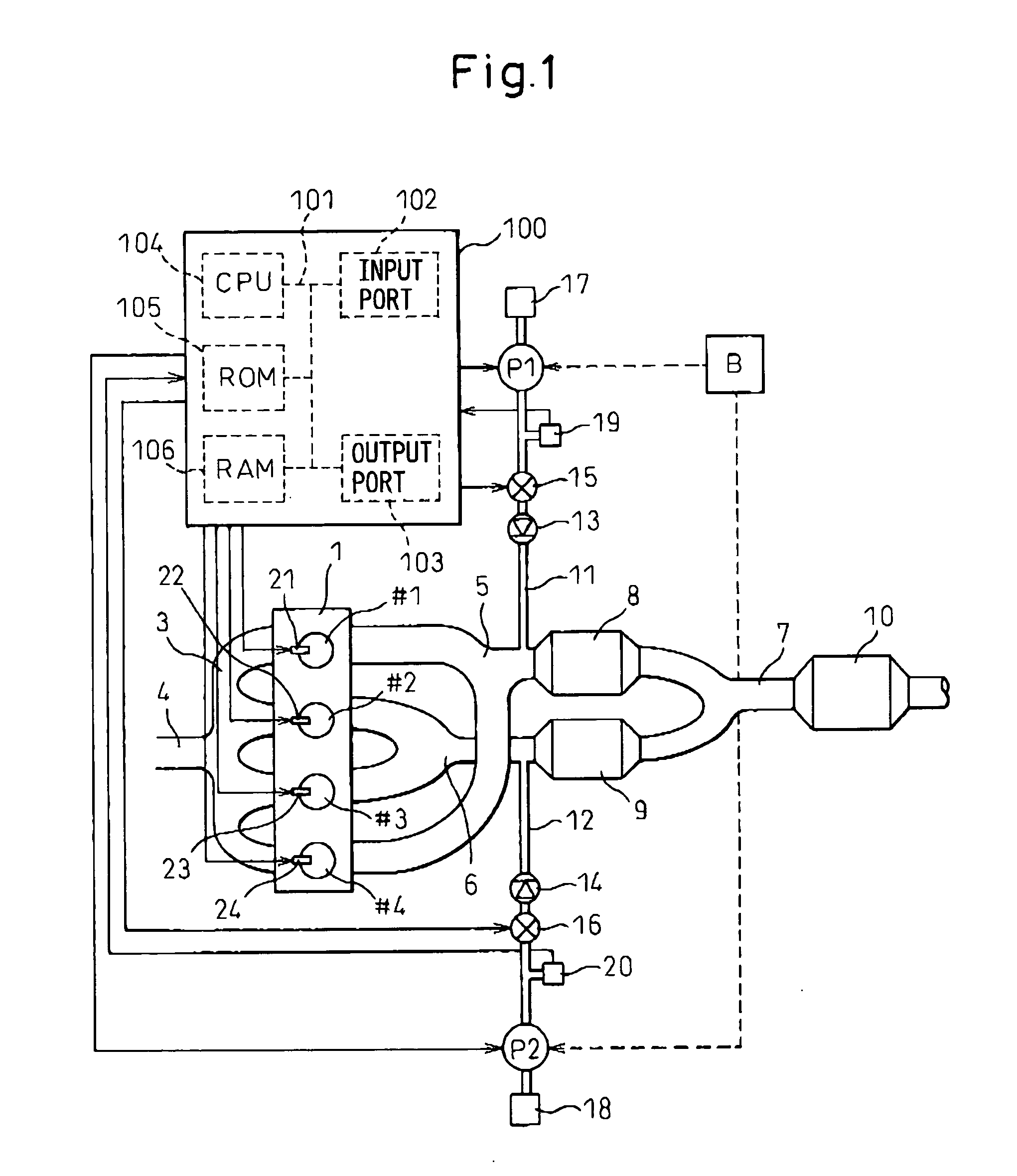Air supply apparatus
- Summary
- Abstract
- Description
- Claims
- Application Information
AI Technical Summary
Benefits of technology
Problems solved by technology
Method used
Image
Examples
first embodiment
[0034] In the first embodiment, the air pumps P1 and P2 can be independently controlled and are provided for the three-way catalysts 8 and 9, respectively, and thus the air can be supplied to the three-way catalyst 8 and 9, respectively, so as to satisfy the various requirements relating to the three-way catalysts 8 and 9.
[0035] In FIG. 1, an electronic control unit (ECU) 100 comprises an input port 102, an output port 103, CPU (microprocessor) 104, ROM (read only memory) 105 and RAM (random access memory) 106, which are connected each other by a bidirectional bus 101. The pressure sensors 19 and 20 are connected to the input port 102 and the outputs of the pressure sensors 19 and 20 are input into the input port 102. The output port 103 is connected to the air flow control valves 15 and 16, fuel injectors 21-24 and the air pumps P1 and P2.
[0036] In the first embodiment, when both of the air pumps P1 and P2 must be activated, first, one of the air pumps P1 and P2, for example, the ...
second embodiment
[0049]FIG. 3 shows an example of the routine for controlling the air pumps according to the In the routine shown in FIG. 3, at step 20, similar to step 10 of the routine shown in FIG. 2, it is judged if the air must be supplied to the three-way catalysts 8 and 9 by activating both of the air pumps P1 and P2. When it is judged that the air must not be supplied to the three-way catalysts 8 and 9 at step 20, the routine proceeds to step 25 where the activation of the first air pump is kept stopped when it is not activated or the activation of the first air pump is stopped when it is activated. Next, the routine proceeds to step 26 where the activation of the second air pump is kept stopped when it is not activated or the activation of the second air pump is stopped when it is activated.
[0050] On the other hand, when it is judged that the air must be supplied to the three-way catalysts 8 and 9 at step 20, the routine proceeds to step 21 which is similar to step 11 of the routine shown ...
PUM
 Login to View More
Login to View More Abstract
Description
Claims
Application Information
 Login to View More
Login to View More - R&D
- Intellectual Property
- Life Sciences
- Materials
- Tech Scout
- Unparalleled Data Quality
- Higher Quality Content
- 60% Fewer Hallucinations
Browse by: Latest US Patents, China's latest patents, Technical Efficacy Thesaurus, Application Domain, Technology Topic, Popular Technical Reports.
© 2025 PatSnap. All rights reserved.Legal|Privacy policy|Modern Slavery Act Transparency Statement|Sitemap|About US| Contact US: help@patsnap.com



